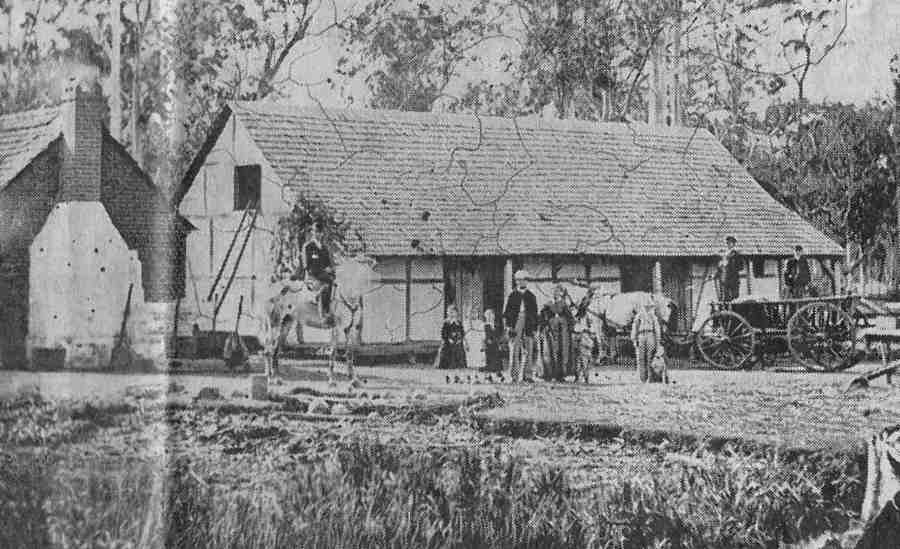Many Uckermarkers packed their suitcases more than 150 years ago. They sold their belongings and searched for happiness in the wide world and settled in America and Australia. They didn't forget their culture also not on other continents. Their descendants search for their family roots today.
The crossing of oceans was full of privation. Ships which left the North Sea ports were crowded with people from Prussia. As emigrants, they had sold their houses and farms, their whole property. In the middle of the 19th century they set out to start a whole new life in America or Australia. The majority of the Brandenburg emigrants came from the Uckermark region. It is said 4,586 people left the region between 1852 and 1858. Around half of them came from the district of Prenzlau.
The passenger lists of the large ships have been preserved until today. They are often the only basis for many Australians or Americans to research their German ancestors. The interest in the old home is rising. Museums, archives and parishes have to answer inquiries from overseas more and more frequently. Most of them want to know why the Uckermark people left their home.
Political, economical but mostly religious reasons were decisive. The aftermath of Napoleon's foreign rule drove mainly peasants into ruin. They had to take out loans to pay the compulsory levies. A change in agriculture, sometimes food shortages, but also diseases such as cholera, fueled the will to emigrate. In addition, there was the high number of children what was common at the time. If a farmer wanted to save his farm, he was not allowed to share it and usually handed it over to the eldest son. The other children must build up their own existence. Probably the most frequently cited reason for emigration was a sharp religious argument. The Old-Lutherans, who had just become strong in the Uckermark, were exposed to intense pressure. Whole families followed their pastor to found their own churches in Australia or America.
Around 40 families from Angermünde left their town in 1843. They followed the former rector Ehrenström from Meseritz, who was touring the area. Many supporters from Frauenhagen, Günterberg, Greiffenberg, Welsow and other places joined the edification hours held in Angermünde. Ehrenström was imprisoned in Hamburg for insulting the state, but was able to follow the local emigrants to America a year later.
A crossing is said to have cost between 590 and 100 thalers at the time. At Whitsun 1843, the first Uckermarkers set off from the villages of Wallmow, Bergholz and Nipperwiese on sailing boats across the inland canal to Hamburg. But they were stopped because allegedly the exit papers were incorrect. 45 emigrants had to turn back. The crossing took 58 days. A total of 1,600 people of Old-Lutheran faith from the Uckermark are said to have landed in New York by the end of the year.
Here the journey continued into sparsely populated rural areas. The Uckermarker people founded the settlements of Martinsville on Lake Erie and New Bergholz. The village of Wallmow in the North-Uckermark experienced a real mass exodus. Those emigrants founded the village of New-Wallmow later. All residents of the village of Mellin (between Parlow and Glambeck) decided to go on the trek in 1860. Since then, only a memorial cross reminds of the place.
The settlers looked for land, built half-timbered houses as they knew it from home, and brought handicrafts and traditions with them. They founded brass bands and churches and most of them still exist today. Even the Uckermärkisch Platt could be preserved over several generations. Letters were written to Brandenburg and further waves of emigration were triggered.
Three families named Rehwaldt left Günterberg in 1843. They settled in Ohio. Today's descendants determined that this group of emigrants alone has around 160 descendants currently alive.
Many families from Greiffenberg, Günterberg, Stegelitz, Metzelthin, Wilmersdorf and Groß Fredenwalde set sail with the sail ship "Susanne Godeffroy" on September 22nd, 1863. After more than 18 weeks, they reached Australia. 22 families from the Uckermark founded later the Bethania Congregation in Queensland. Their Old- Lutheran church is still standing today. Eight families originally came from Günterberg. The eleven-year-old son Carl of the mason Andreas Holzheimer left a travel description. This shows that the German emigrants mostly stayed together and later married each other. A child was even born during the crossing.
Prenzlauer settlers founded the also still existing place Prenzlau in Australia. Efforts are now being made to establish contact.
In addition to the passenger lists, old photos, German newspapers of the emigrants and historical family descriptions in book form have also appeared in recent years. They show how long the customs and traditions, language and literature, building forms, farming and culture from the old homeland survived.
A street is dedicated to one of the first settlers in Bethania, Australia - Johann Andreas Holzheimer - to this day. One of the Uckermark descendants still lives at the same place.
The report was published in the "Uckermark Anzeiger" on 5./6. April 2008. The report was prepared by Oliver Schwers. |


